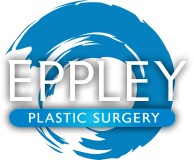Your Questions
Your Questions
Q: Dr. Eppley, I am a 42 year old male and I am interested in a Chondrolaryngoplasty. (adam’s apple reduction) I am just very self conscious about my large adam’s apple and I am just tired of being harassed about it. I have heard that the cartilage turns to bone at a certain age so at 42 can I still have this procedure done?
A: While it is true that many cartilage areas in the body get partially calcified as one ages, and the thyroid cartilage is no exception, this is not a concern for you at age 42. At this age the thyroid cartilage is still mainly cartilage and it does not change the ability to shave it down. The reality is that even if you were older and the thyroid cartilage was more calcified, it could still be reduced and would be burred down by a machine-driven rotary drill as opposed to shaving. Thus, you should feel completely comfortable being able to have a successful adam’s apple reduction (chondrothyroplasty) at any age regardless of whether the cartilage is uncalcified, partially calcified or even completely calcified.
Dr. Barry Eppley
Indianapolis,Indiana
Q: I am inquiring as to whether you perform tracheal shaves? I have been bothered by the bulge in my neck caused by my Adam’s apple. As a female, it does not give my neck a very nice profile and looks too manly. I have read that the protruding cartilage can be shaved down. Is there much scarring and what is the recovery like?
A: A tracheal shave, known medically as a chondrolaryngoplasty reduces the size of the thyroid cartilage through a small horizontal incision in the neck. While often thought of as only a transgender procedure (facial feminization), I have performed more of these procedures on men and women who are merely just uncomfortable with the prominence of their Adam’s Apple.
The procedure is actually fairly simple and does truly consist of shaving down the protruding cartilage with a scalpel. Through a small horizontal incision in a favorable or prominent skin crease near the thyroid cartilage, the vertical strap muscles are separated to get direct access to the protruding cartilage. It is shaved down as much as possible to get a throat line that appears smoother and less angular. One must be careful to not take too much cartilage away which can de-stabilize the attachments of the underlying vocal folds, risking potential hoarseness after surgery. While the goal is as smooth a neckline as possible, sometimes it can merely be reduced significantly but not made completely flat. The small neck incision will go on to heal very nicely with little scarring.
Recovery is quite quick with minimal discomfort. I do not place patients on any type of restrictions after surgery. There are no sutures to remove. There is some mild swelling and bruising which goes completely away in two weeks. There may be some temporary discomfort on swallowing. Usually, there is little to no change in the pitch of a patient’s voice. There are some topical scar treatments that can be done beginning three weeks after surgery to optimize the fading of the fine line scar.
Dr. Barry Eppley

